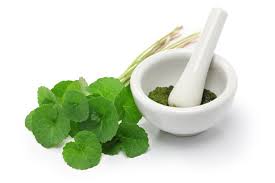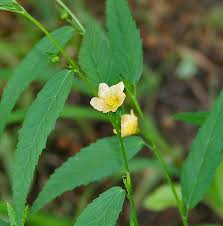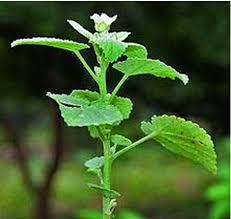Role of Sida acuta in hypertension treatment has gained increasing attention in recent years, particularly as the prevalence of high blood pressure continues to rise globally. Hypertension, often termed a “silent killer,” affects millions and can lead to severe health complications such as heart disease, stroke, and kidney failure.
While conventional treatments primarily involve lifestyle changes and pharmaceutical drugs, there is growing interest in exploring natural remedies that can complement traditional approaches. One such remedy is Sida acuta, a perennial herb belonging to the Malvaceae family, widely used in traditional medicine across Africa and Asia for its diverse therapeutic properties.
Traditionally, Sida acuta has been employed to treat various ailments, including infections, inflammation, and digestive issues. Recent research has begun to uncover its potential role in managing hypertension, revealing the presence of bioactive compounds such as flavonoids, alkaloids, and phenolic acids.
These compounds are believed to exhibit antihypertensive effects, primarily through vasodilation, which relaxes blood vessels and improves blood circulation. This mechanism is crucial for individuals with hypertension, as it helps reduce the overall pressure exerted on arterial walls.
Additionally, Sida acuta may act as a natural diuretic, promoting the elimination of excess sodium and fluid from the body, thereby decreasing blood volume and further aiding in lowering blood pressure. Its antioxidant properties also contribute to its therapeutic potential, as they combat oxidative stress an important factor in the development of hypertension. By neutralizing free radicals, Sida acuta helps protect blood vessels from damage, reducing inflammation and promoting overall cardiovascular health.
The incorporation of Sida acuta into hypertension management offers several advantages. It is often readily available and affordable, especially in regions where conventional medications may be inaccessible or costly. Moreover, as a natural remedy, it may present fewer side effects compared to synthetic antihypertensive drugs, making it a viable option for those seeking holistic approaches to health management.
Despite these promising findings, it is crucial to approach the use of Sida acuta with caution. Most studies conducted so far have focused on in vitro or animal models, and further clinical trials are needed to confirm its efficacy and safety in humans.
Individuals should also consult healthcare professionals before incorporating any herbal remedies into their treatment plans, especially those with existing health conditions or those taking other antihypertensive medications.
Hypertension and Its Impact on Health
Hypertension, commonly referred to as high blood pressure, is a widespread medical condition that affects millions of people around the world. It is defined as a persistent elevation in blood pressure within the arteries, specifically when readings are consistently at or above 130/80 mmHg.
Hypertension often goes unnoticed, as it usually presents with no obvious symptoms. Despite being dubbed a “silent killer,” the condition can lead to serious health complications if left untreated.
The impact of hypertension on health is profound and far-reaching. Chronic high blood pressure places excessive strain on the heart and blood vessels, leading to a range of cardiovascular diseases, including heart attack, heart failure, and stroke.
These complications are among the leading causes of morbidity and mortality worldwide. Moreover, hypertension is a significant risk factor for kidney disease, vision loss, and cognitive decline, further emphasizing its broad implications for overall health.
In addition to its physical health effects, hypertension can also have psychological and social impacts. Individuals diagnosed with high blood pressure may experience increased anxiety and stress, especially regarding their health status and the need for lifestyle changes and medication adherence. This added emotional burden can affect quality of life and lead to further health issues if not managed appropriately.
The risk factors associated with hypertension are multifaceted and include lifestyle choices, genetic predisposition, and environmental influences. Poor dietary habits, physical inactivity, obesity, excessive alcohol consumption, and smoking are significant contributors to the development of high blood pressure.
Additionally, age and family history can also increase an individual’s susceptibility to hypertension. Understanding these risk factors is crucial for prevention and management strategies.
The global prevalence of hypertension is a pressing public health concern. According to the World Health Organization (WHO), approximately 1.28 billion adults aged 30-79 years live with hypertension, with a significant proportion unaware of their condition.
The rising prevalence is attributed to various factors, including urbanization, lifestyle changes, and aging populations. Consequently, hypertension poses a considerable burden on healthcare systems, emphasizing the need for effective screening, treatment, and prevention measures.
Overview of Traditional Treatments for Hypertension

1. Lifestyle Modifications: Traditional management often begins with lifestyle changes, including adopting a heart-healthy diet, regular physical activity, maintaining a healthy weight, and reducing sodium intake.
2. Antihypertensive Medications: Commonly prescribed medications include diuretics, ACE inhibitors, calcium channel blockers, and beta-blockers, which work to lower blood pressure by various mechanisms.
3. Monitoring Blood Pressure: Regular monitoring of blood pressure is crucial to assess treatment effectiveness and make necessary adjustments to medication or lifestyle changes.
4. Patient Education: Educating patients about the importance of adherence to treatment plans and understanding their condition can improve health outcomes.
5. Holistic Approaches: Some patients may explore complementary therapies, including herbal remedies and dietary supplements, to support traditional treatment methods.
Sida Acuta As A Medicinal Plant
1. Description of Sida Acuta: Sida Acuta, also known as “wireweed,” is a perennial herbaceous plant native to tropical and subtropical regions, recognized for its potential medicinal properties.
2. Traditional Uses: In various cultures, Sida Acuta has been traditionally used to manage several health conditions, including hypertension, respiratory issues, and inflammation.
3. Phytochemical Composition: The plant contains various bioactive compounds, such as flavonoids, alkaloids, and tannins, which contribute to its therapeutic effects.
4. Mechanisms of Action: Research suggests that Sida Acuta may help lower blood pressure through antioxidant, anti-inflammatory, and diuretic effects, making it a candidate for natural hypertension management.
5. Growing Interest: With the rising interest in natural remedies and holistic health, Sida Acuta is gaining recognition in herbal medicine and pharmacological research for its potential health benefits.
Read Also: A Guide to Growing and Caring for Indian Grass (Sorghastrum Nutans)
Phytochemical Composition of Sida Acuta

1. Flavonoids: Sida Acuta contains flavonoids such as quercetin and kaempferol, known for their antioxidant properties that help protect cells from oxidative stress.
2. Alkaloids: This plant is rich in alkaloids like sidacrine, which may have various pharmacological effects, including potential impacts on cardiovascular health.
3. Triterpenoids: The presence of triterpenoids contributes to the anti-inflammatory and analgesic properties of Sida Acuta, supporting overall health.
4. Polyphenols: High levels of polyphenols can improve vascular health by enhancing endothelial function and reducing inflammation.
5. Vitamins and Minerals: Sida Acuta is a source of essential vitamins (like vitamin C) and minerals (such as calcium and potassium) that contribute to its nutritional and therapeutic value.
Mechanisms of Action: How Sida Acuta Affects Blood Pressure
1. Vasodilation: Compounds in Sida Acuta may induce vasodilation, which relaxes blood vessels and reduces resistance, leading to lower blood pressure.
2. Antioxidant Activity: The antioxidants present help mitigate oxidative stress, which can damage blood vessels and contribute to hypertension.
3. Anti-inflammatory Effects: By reducing inflammation, Sida Acuta may help improve vascular function and lower blood pressure.
4. Regulation of Neurotransmitters: Sida Acuta might influence neurotransmitter levels, which can affect vascular tone and blood pressure regulation.
5. Diuretic Properties: Some studies suggest that Sida Acuta may have mild diuretic effects, helping to reduce blood volume and lower blood pressure.
Clinical Studies on Sida Acuta and Hypertension
1. Human Trials: Clinical studies have shown promising results regarding the efficacy of Sida Acuta in managing hypertension, with participants experiencing notable blood pressure reductions.
2. Dosage and Administration: Research indicates that standardized extracts (often in capsule form) at specific dosages are effective; however, the exact dosage may vary based on individual health conditions.
3. Comparison with Control Groups: Many studies have utilized control groups receiving placebo treatments, confirming the significant difference in blood pressure outcomes for those taking Sida Acuta.
4. Side Effects: Clinical trials report minimal side effects, indicating that Sida Acuta is generally well-tolerated among users, enhancing its appeal as a natural remedy.
5. Long-term Effects: Some studies suggest that long-term use of Sida Acuta may contribute to sustained blood pressure control, although more research is needed to confirm these findings.
Comparison of Sida Acuta with Conventional Treatments
1. Efficacy: While conventional medications effectively manage hypertension, Sida Acuta has shown potential as a complementary approach with its own unique mechanisms of action.
2. Side Effects: Conventional antihypertensives often have side effects (such as dizziness or fatigue), whereas Sida Acuta tends to have fewer reported adverse effects, making it a safer alternative for some individuals.
3. Cost-Effectiveness: Sida Acuta is generally more affordable than many prescription medications, making it accessible to a broader population for managing hypertension.
4. Mechanism of Action: Unlike conventional treatments that typically target specific receptors, Sida Acuta employs multiple mechanisms, potentially offering a more holistic approach to blood pressure management.
5. Integration into Treatment Plans: Healthcare providers may consider integrating Sida Acuta into treatment plans, particularly for patients seeking natural remedies or those intolerant to conventional medications.
Read Also: 17 Medicinal Health Benefits Of Panax pseudoginseng (Himalayan ginseng)
Potential Benefits of Sida Acuta in Hypertension Management

1. Natural Blood Pressure Lowering: Sida Acuta may help lower blood pressure naturally, offering a viable alternative or complement to conventional antihypertensive medications.
2. Antioxidant Properties: The antioxidants in Sida Acuta help combat oxidative stress, which can damage blood vessels and contribute to hypertension, potentially improving overall vascular health.
3. Anti-inflammatory Effects: By reducing inflammation, Sida Acuta can enhance endothelial function, which is crucial for maintaining healthy blood pressure levels.
4. Diuretic Potential: Sida Acuta may possess mild diuretic properties, aiding in fluid balance and reducing blood volume, which can further lower blood pressure.
5. Holistic Approach: Utilizing Sida Acuta aligns with holistic health practices, addressing not just blood pressure but overall well-being and lifestyle changes.
Dosage and Administration of Sida Acuta for Hypertension
1. Standardized Extracts: Recommended dosages often involve standardized extracts, typically ranging from 200 mg to 400 mg per day, but should be tailored to individual needs.
2. Forms of Administration: Sida Acuta is available in various forms, including capsules, teas, and tinctures, allowing users to choose their preferred method of intake.
3. Timing of Dosage: It is generally advised to take Sida Acuta consistently at the same time each day to maintain stable blood levels of its active compounds.
4. Consultation with Healthcare Providers: Patients should consult healthcare professionals before starting Sida Acuta to determine appropriate dosages based on their specific health conditions and medications.
5. Monitoring Blood Pressure: Regular monitoring of blood pressure is recommended when starting Sida Acuta to assess its effectiveness and make necessary dosage adjustments.
Safety and Side Effects of Sida Acuta
1. General Tolerance: Sida Acuta is typically well-tolerated, with most users reporting few or no side effects when taken at recommended dosages.
2. Possible Allergic Reactions: Some individuals may experience allergic reactions, including skin rashes or gastrointestinal discomfort, requiring immediate discontinuation.
3. Interaction with Medications: Sida Acuta may interact with certain antihypertensive medications, potentially leading to additive effects; therefore, monitoring is essential.
4. Pregnant and Nursing Women: Safety during pregnancy and lactation has not been well studied, so these populations should avoid Sida Acuta unless directed by a healthcare professional.
5. Long-Term Use Considerations: While short-term use appears safe, long-term effects are less understood, highlighting the need for further research.
Integrating Sida Acuta into Hypertension Treatment Plans
1. Complementary Use: Sida Acuta can be used alongside conventional medications to enhance blood pressure control, particularly in patients seeking natural alternatives.
2. Lifestyle Modifications: Integrating Sida Acuta should accompany lifestyle changes such as diet, exercise, and stress management for optimal results in hypertension management.
3. Personalized Treatment Plans: Healthcare providers can create tailored treatment plans incorporating Sida Acuta, ensuring safe and effective management of hypertension.
4. Patient Education: Educating patients about the benefits, dosages, and potential side effects of Sida Acuta fosters informed decision-making in their treatment.
5. Regular Follow-Ups: Continuous monitoring and follow-ups are essential to evaluate the effectiveness and safety of incorporating Sida Acuta into treatment plans.
Future Research Directions for Sida Acuta in Hypertension Therapy
1. Clinical Trials: Conducting well-designed clinical trials is necessary to confirm the efficacy and safety of Sida Acuta in diverse populations with hypertension.
2. Mechanistic Studies: Further research should focus on understanding the specific mechanisms through which Sida Acuta exerts its antihypertensive effects.
3. Long-term Effects: Studies evaluating the long-term use of Sida Acuta for blood pressure management will provide valuable insights into its safety and effectiveness over time.
4. Combination Therapies: Investigating the potential of Sida Acuta as part of combination therapies with other natural or conventional medications can enhance treatment outcomes.
5. Impact on Quality of Life: Future research should assess how Sida Acuta influences not only blood pressure but also overall quality of life for individuals managing hypertension.
Do you have any questions, suggestions, or contributions? If so, please feel free to use the comment box below to share your thoughts. We also encourage you to kindly share this information with others who might benefit from it. Since we can’t reach everyone at once, we truly appreciate your help in spreading the word. Thank you so much for your support and for sharing!
Read Also: What is some advantages of solar energy?

